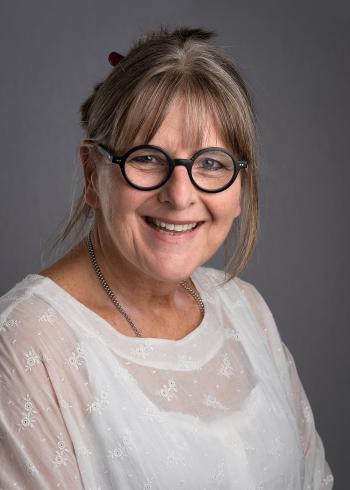

Annual report 2017-18
Chair's Report 2017-18

The 2.9 million strong film, broadcast and music collection in the NFSA, is one of the most significant repositories of Australia’s memory. A living archive, it is home to our stories going back to the earliest films ever made, as well as our music and our songs, our TV and radio. It reminds us of who we are, what we have been through, what we have learned and what we hold dear.
The collection ranges from The Story of the Kelly Gang (1906) to episodes of Neighbours to the latest in contemporary music and online media as well a large number of film, broadcast and music-related oral histories, home movies, and significant Australian First Peoples’ materials. The NFSA has the unique responsibility— and privilege—of collecting, preserving and sharing Australia’s audiovisual heritage. Our archive also includes a complementary collection of related documents and artefacts. Our collection not only looks back, but looks forward – further into our now digital world which opens extraordinary possibilities for people everywhere to access, and add to, what we hold at the NFSA. We foster education, creative use and reuse of our holdings and we seek to help Australians use the NFSA to continue to fire our national imagination. The NFSA is central to keeping Australia’s memories alive and fostering collective creativity and imagination.
In October 2017, we were delighted to welcome Jan Müller to lead the NFSA as CEO. Jan moved to Australia from the world-renowned Netherlands Institute for Sound and Vision because he saw the opportunities for the NFSA as digital technology changes the nature of our work and magnifies its impact. Jan, with his international reputation in audiovisual heritage, has set about creating the NFSA’s new vision, which will ensure that we continue to grow as Australia’s national audiovisual archive and are ready to seize the opportunities and face the challenges that technology brings.
The NFSA is committed to digitising our collection, for preservation and accessibility, through our new Digitisation Strategy 2018–2025. This sets out the case for digitisation, the materials at risk and how we will take a leadership role in the digitisation of Australia’s audiovisual heritage – before a great deal of it is lost forever.
Three years of collaboration and conscientious work came to fruition with the launch of the ‘Starstruck: Australian Movie Portraits’ exhibition in November 2017, which was delivered in partnership with the National Portrait Gallery (NPG). I would like to thank all those who made the exhibition such a success, especially the curatorial staff from the NFSA and NPG, the members of the NPG Board, including Chair, Dr Helen Nugent AO, and Angus Trumble, NPG Director.
This year, we developed our Reconciliation Action Plan (RAP), which underpins our commitment to build positive relationships between Aboriginal and Torres Strait Islander peoples and the wider Australian community. Working with Reconciliation Australia, we undertake to deliver on the actions in the plan and ensure that meaningful relationships and partnerships are built with Aboriginal and Torres Strait Islander communities, audiovisual practitioners, creators and artists across Australia. I would like to thank the Indigenous Connections team and the RAP Working Group for making our RAP a reality.
We work to be a leader among the digital cultural collecting institutions with the annual Digital Directions symposium, delivered in partnership with the National Archives of Australia and the National Library of Australia. In 2017, its third year, the symposium’s theme was ‘users of digital collections’, looking at how collecting institutions could improve the accessibility of their collections.
Our NFSA Restores program continued this year, with the restoration of My Brilliant Career (1979), Lousy Little Sixpence (1983), Mabo: Life of an Island Man (1997) and three 1920s Snowy Baker titles. NFSA Restores is a wonderful example of the vital work that we do to save Australia’s audiovisual heritage so that it can be enjoyed by generations to come.
We could not have come as far without the exceptional contribution of our NFSA ambassadors, including our NFSA Restores and Film Ambassador, Margaret Pomeranz AM; Sound Ambassador, Shaun James; TV Ambassador, Glen Kinging; and Lost Films Ambassador, Anthony Buckley AM. We can only continue to expand our impact and reach because of their standing, expertise and generous support.
During the year, we secured $3.88 million over the next three years from the Modernisation Fund to restore the sandstone on the historic Acton building which is our headquarters. We needed the funds both for the restoration work and to replace some critical building infrastructure. I thank the staff of the Department of Communications and the Arts and the Minister for Communications and the Arts, Senator the Hon Mitch Fifield, for their constant support.
We welcomed the appointment of Jude Donnelly to the Board in December 2017, joining my other Board colleagues, whose contributions have been significant and enthusiastic. I also acknowledge the members of the NFSA Indigenous Connections Committee and the NFSA Audit Committee, chaired by Carol Lilley, who provide their time and expertise to support us.
Finally, I would like to thank our NFSA staff for their expertise and their passion for what we do. Change is a constant, and our staff are embracing it as our collection grows, as technology broadens our perspective and as we think differently about our role and the possibilities ahead.

Gabrielle Trainor AO
Chair, NFSA Board
The National Film and Sound Archive of Australia acknowledges Australia’s Aboriginal and Torres Strait Islander peoples as the Traditional Custodians of the land on which we work and live and gives respect to their Elders both past and present.